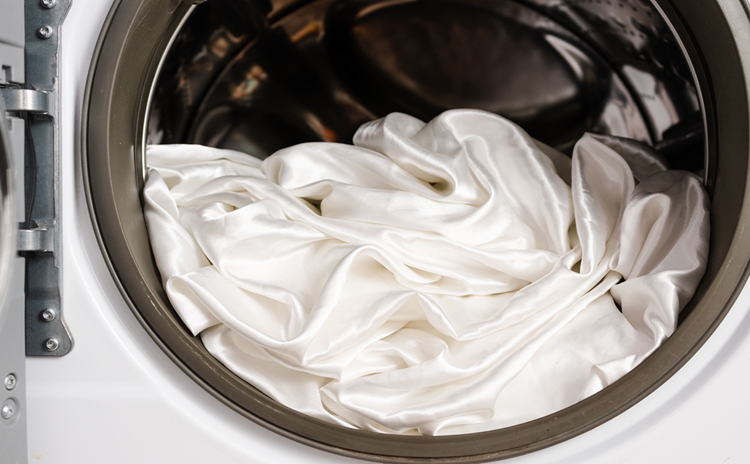Bedding sheets labeled “100 percent silk” or “100 percent Mulberry silk” are the real thing—fabrics woven entirely from threads spun from the excretions of the silk caterpillar. Because silk sheets are usually quite expensive, you’ll want to care for them properly. With some attention to water temperature and detergent selection, your silk sheets can last for many years. Use a gentle touch with no twisting or wringing, while silk fabric is strong when it’s dry, the fibers are much weaker when wet.

Pretreat Stains
For any difficult-to-remove stains like blood, mascara, or makeup, work a tiny dab of detergent into the stained area with your fingers. Let the detergent work for at least 15 minutes to begin lifting the stain before washing.
Set the Washer Cycles
Silk sheets should be washed on the gentle cycle with the slowest final spin cycle, if that is set separately. Set the water temperature to cold.
Add Detergent
To keep the silky feel you desire, silk should be cleaned with a mild, gentle detergent. Choose one recommended for silk or wool.
Add Distilled White Vinegar
Skip a commercial fabric softener and add distilled white vinegar to the rinse cycle. Vinegar helps remove any soapy residue left in the fibers and leave them silky.
Dry the Sheets
Hot temperatures in an automatic dryer are not compatible. Tumble dry silk sheets on the lowest heat setting of your dryer. Remove the sheets while still slightly damp and allow them to finish drying on a drying rack. Some manufacturers of the finest silk sheets discourage the use of a mechanical dryer altogether and recommend indoor air-drying only.
Iron the Sheets
You should always use a pressing cloth or a clean, white cotton cloth between the iron and the silk to prevent scorching. Ironing is not mandatory, as silk sheets generally flatten out smoothly once put onto a bed.
Silk Sheets Care and Repairs
Silk fabrics can fray or rip at the seams. If you choose to repair holes, hand-stitch the rip, and apply an anti-fraying product found at fabric stores. There are also no-sew fabric adhesive products that can repair a rip.
Storing Silk Sheets
Silk sheets should be folded or rolled without sharp creases that can weaken the fibers. Do not store in a plastic bag or box that can trap moisture, and choose a cool, dry closet. Silk fibers can attract moths, so use a small amount of a natural moth repellent if you have trouble with insect infestations.
Learn more: http://www.springtextile.com Or Spring Hometextile video channel: www.youtube.com/channel/UCMCz-yKQMYxA1e2Uscw5PHw Also can contact Tina at: [email protected]
